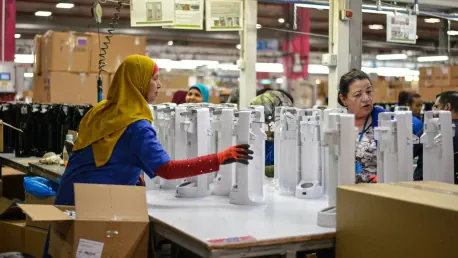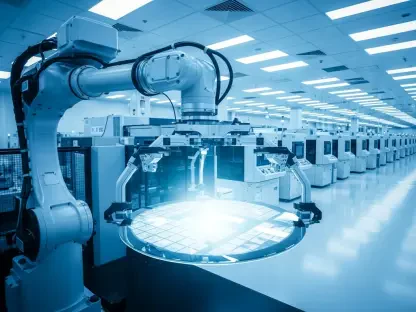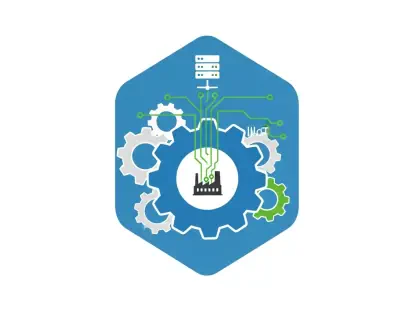The garment industry is a cornerstone of Bangladesh’s economy, contributing significantly to the country’s exports. However, the rise of automation and surveillance technologies in garment factories has sparked debate over their impact on workers’ lives, particularly women. This article explores the various dimensions of this complex issue, shedding light on the contrasting viewpoints surrounding automation’s influence on productivity, employment, and worker well-being.
The Role of Automation in Garment Factories
Technological Advances
Automation in Bangladesh’s garment sector involves innovative technologies like “Nidle,” an internet-connected device that monitors workers’ productivity. Nidle tracks the number of pieces sewn per hour and idle time, providing real-time feedback displayed on sewing machines. This system is aimed at increasing efficiency and maximizing output, offering a detailed insight into each worker’s performance. As a result, factory managers can identify areas for improvement and reduce downtime, thereby enhancing overall productivity. The integration of such advanced technology is a response to the growing pressure on the industry to keep up with global competition and rising labor costs.
In addition to Nidle, other semi-automated machines have been introduced in factories to further streamline production processes. These machines not only speed up the manufacturing process but also diminish the need for a large workforce, posing an existential challenge for many workers. The automation wave is reshaping the landscape of garment manufacturing, pushing traditional, labor-intensive methods into the background. However, while these technological advancements promise efficiency and cost savings for factory owners, they also cast a shadow over the job security and well-being of the garment workers who are directly impacted by these changes.
Factory Owners’ Justifications
Factory owners argue that smart manufacturing technologies help address rising wage costs and improve productivity. For instance, Team Group, a major industry player, reported a 10% production increase after implementing Nidle and semi-automatic machines. They contend that the financial pressures to maintain competitive pricing while meeting wage demands necessitate these technological interventions. The cost of labor has been on an upward trajectory, driven by both increased per capita income and workers’ demands for better pay. Consequently, factory owners see automation as a critical tool to manage these rising costs while still keeping the industry viable.
Moreover, factory owners highlight that automation does not only serve the purpose of cost management but also enhances the quality and consistency of output. By relying on machines for repetitive tasks, the likelihood of human error is significantly reduced, leading to higher standards in finished products. This aspect is particularly important in the cutthroat garment industry, where minor flaws can result in substantial financial losses. By streamlining production processes and maintaining stringent quality control, factory owners believe they can attract more international clients and secure a steady flow of orders, ensuring long-term sustainability for their businesses.
Economic Pressures and Competition
Global Market Dynamics
The adoption of automation is driven by the need to stay competitive in the global garment market. Countries like Vietnam and Cambodia pose significant competition, compelling Bangladeshi factories to enhance efficiency through technological upgrades. The global market for garments is highly competitive, with buyers often switching suppliers based on cost, quality, and delivery timelines. In this context, technological advancements become crucial for Bangladeshi factories to maintain their edge and keep pace with the rapid shifts in the market. By embracing automation, these factories aim to reduce production times, minimize operational costs, and ultimately offer more attractive pricing to international buyers.
Additionally, the global market dynamics increasingly demand flexibility and the ability to cater to smaller, customized orders along with large bulk orders. Automated systems provide garment factories with the flexibility to quickly adjust production lines for varied demands without significant downtime. By doing so, these factories can cater to the diverse needs of global fashion brands that often require swift turnarounds to keep up with seasonal trends. Automation, thus, becomes an indispensable tool in an industry characterized by its fast pace and ever-evolving demands. It empowers Bangladeshi factories to maintain competitiveness and seize new opportunities in the global market.
Cost Management and Wage Pressures
Factory owners believe automation is crucial to managing labor costs while still offering competitive salaries. Rising per capita income and workers’ demands for higher pay have necessitated technological interventions to maintain economic viability. The garment industry has long been known for its low wages, which have been a point of contention and a driver behind numerous labor protests. However, as economic conditions improve and living costs rise, workers have increasingly demanded better wages and working conditions. This has placed additional financial strain on factory owners already grappling with slim profit margins.
In this challenging economic landscape, owners view automation as a solution to wage pressures. By investing in automated and semi-automated machines, they can reduce their reliance on a large workforce and manage labor expenses more efficiently. This technological shift allows factories to offer competitive salaries to remaining workers without compromising on their profit margins. At the same time, it helps them stay aligned with international labor standards and buyer expectations, which are increasingly focused on fair wages and ethical working conditions. Consequently, while automation presents a partial remedy to the complex issue of wage management, it also introduces new dynamics into the labor market, affecting workers’ livelihoods in profound ways.
Impact on Workers’ Lives
Increased Stress and Job Insecurity
Workers, union representatives, and academics highlight the adverse effects of automation on worker stress and job security. The relentless pace set by machines increases anxiety and physical strain, particularly among female workers who face additional domestic responsibilities. The introduction of automated systems translates into higher productivity expectations, often leaving workers feeling pressured to meet ever-increasing targets. This constant demand for high performance can lead to significant stress and burnout, creating a work environment fraught with tension and unease.
Moreover, the threat of job displacement looms large over workers as automation continues to take root in factories. The fear of being replaced by machines increases job insecurity, creating an atmosphere of uncertainty and anxiety. Female workers, in particular, find themselves at a disadvantage due to limited access to training and upskilling opportunities. Balancing work with domestic responsibilities makes it exceedingly challenging for them to acquire the skills needed to adapt to a rapidly changing workplace. Consequently, these workers face heightened vulnerability to job loss and economic instability as automation advances.
Health and Well-being Concerns
The use of technologies like Nidle has compelled workers to forgo basic needs, such as bathroom breaks, to meet targets. This not only exacerbates health issues but also contributes to heightened anxiety and deteriorating working conditions. Workers often find themselves working through breaks and ignoring physical discomfort to avoid penalties and meet stringent productivity standards set by automated systems. This relentless push to achieve targets can lead to severe health consequences, including repetitive strain injuries, chronic fatigue, and other stress-related ailments.
Furthermore, the mental toll of working under constant surveillance and strict performance metrics cannot be underestimated. The perpetual monitoring of performance and immediate feedback that automation systems provide can create a high-pressure environment, leading to mental health issues such as anxiety and depression. Without adequate support systems in place, workers struggle to cope with the dual pressures of physical exertion and mental stress. This situation underscores the need for a more balanced approach that prioritizes workers’ health and well-being, even as factories strive to enhance productivity and efficiency through technological advancements.
Gender Disparity
Challenges for Female Workers
Female workers struggle more with automation due to limited training opportunities and domestic responsibilities. Their representation in the workforce has significantly declined, from 85% in 1991 to 57% in 2023. This decline highlights the gender disparity that exists within the sector, exacerbated by the onset of automation. Women, who have traditionally formed the backbone of the garment workforce, now find themselves marginalized as factories shift towards technology-driven production processes. The limited availability of training programs designed to equip female workers with the necessary skills to operate automated systems only deepens this divide.
In addition to the lack of training, the burden of domestic responsibilities further restricts female workers’ ability to adapt to automation. Many women juggle their roles as primary caregivers with their jobs, leaving them little time or energy to pursue additional education or training. This double burden places them at a significant disadvantage in an industry that increasingly values technical proficiency and adaptability. Consequently, the transition to automated systems risks pushing many female workers out of the workforce entirely, raising concerns about gender equality and the need for more inclusive labor practices.
Job Losses and Wage Struggles
Despite technological advances, wage increases have primarily resulted from workers’ protests and demands. Automation has also led to job losses, disproportionately affecting women and fueling chronic job insecurity. Many factories, seeking to cut costs and streamline operations, have reduced their workforce as machines take over tasks that were once performed by human workers. This reduction in workforce size disproportionately impacts female workers, who already face significant challenges in securing equitable employment opportunities within the sector.
The wage struggles are compounded by the fact that automation has not necessarily translated into fair compensation for workers. While productivity may have increased, workers argue that their wages have not seen proportional improvements. Instead, wage gains have been largely attributed to workers’ organized efforts to demand better pay through protests and strikes. Case in point, the government’s minimum wage increase to 12,500 taka ($104) per month in 2023 still falls short of labor unions’ demands for a higher baseline wage. This ongoing wage disparity, coupled with job losses, continues to undermine the economic stability of workers, particularly women who are disproportionately affected.
Industry and Government Perspectives
Need for Automation
Industry stakeholders argue that automation is essential for maintaining competitiveness and profitability. Technologies like semi-automated machines are seen as vital for sustaining margins and attracting more orders. For garment producers operating in a highly competitive global market, the ability to deliver high-quality products at a lower cost is paramount. Automation not only enhances operational efficiency but also reduces the likelihood of human error, ensuring consistent quality that meets international standards. Factory owners believe that without embracing these technological advancements, they risk falling behind competitors from other garment-producing countries.
Furthermore, automation is seen as a strategic response to the evolving demands of international buyers who increasingly prioritize fast, reliable, and ethical production practices. By integrating automated systems, factories aim to bolster their reputation and secure long-term contracts with global fashion brands. From the perspective of industry stakeholders, the push towards automation is not merely about cutting costs but is also a proactive measure to future-proof the industry against shifting market dynamics and consumer preferences.
Promises of Employment
Factory owners and technology vendors claim that automation could ultimately lead to more employment opportunities by increasing order volumes. However, this perspective is contested by labor unions advocating for a fairer distribution of automation benefits. Proponents of automation argue that by enhancing productivity and competitiveness, factories can attract more business and, consequently, create more jobs. They envision a scenario where a thriving garment industry, fueled by technological advancements, generates new roles in areas such as machine maintenance, quality control, and logistics.
On the contrary, labor unions and worker advocates are skeptical of this optimistic outlook. They contend that while automation may indeed increase order volumes, the quality of jobs created and their accessibility to displaced workers, particularly women, remain questionable. The jobs generated are often specialized and require skills that many current workers lack due to insufficient training opportunities. This mismatch between available jobs and the skillsets of displaced workers highlights the need for a more equitable approach to automation that includes comprehensive retraining programs and ensures that the benefits of technological advancements are shared more widely among the workforce.
Advocacy for Workers’ Rights
Union Leaders’ Stance
Labor unions and advocacy groups call for a balanced approach to technological integration. They emphasize the need for worker-friendly technologies that do not exploit workers but instead ensure fair treatment and job security. Union leaders argue that while automation is inevitable, it should be implemented in a way that respects workers’ rights and enhances their well-being. They advocate for policies that include workers in decision-making processes, provide adequate training and upskilling opportunities, and guarantee fair wages and job security.
In addition to advocating for fair treatment, unions highlight the importance of transparency and accountability in the deployment of automated systems. They call for clear guidelines and regulations to ensure that productivity metrics and surveillance technologies are used ethically and do not infringe on workers’ privacy or dignity. By promoting a more inclusive and humane approach to automation, union leaders aim to protect workers’ interests and foster a more sustainable and equitable garment industry.
Equitable Technological Integration
The garment industry is a vital part of Bangladesh’s economy, playing a significant role in the country’s export earnings. However, the increasing use of automation and surveillance technologies in garment factories has sparked a debate about their effects on workers, especially women. Automation promises to enhance productivity and efficiency, but it also raises concerns about job losses and the well-being of employees. Critics argue that machines may replace human labor, leading to unemployment and economic hardship for many workers, who are predominantly female. Proponents, on the other hand, believe automation can lead to better working conditions, as machines handle the most arduous tasks. Moreover, surveillance technologies can ensure a safe and secure environment, reducing the risk of workplace accidents and harassment. This article delves into the multiple layers of this issue, offering a balanced perspective on the impact of these technological advancements on productivity, employment, and the overall well-being of the workers in Bangladesh’s garment sector.









